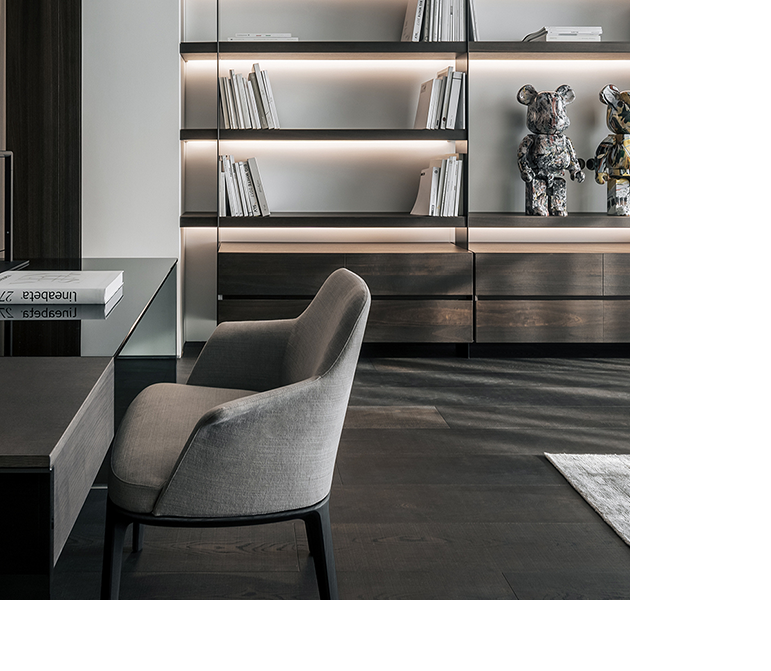WORKING FROM HOME? CONSIDER THESE 7 DESIGN FEATURES

The COVID-19 pandemic turned Corporate America on its head, as millions of workers transitioned to temporarily working from home. And even as restrictions ease, interest in more permanent work-from-home scenarios is high among employees and becoming more readily accepted by companies.
The prospect of broader work-from-home policies brings a lot of flexibility for workers. But it also drives the need for better home-office setups. The kitchen table or the couch that sufficed during the pandemic shouldn’t be a long-term solution.
What features should you consider for your new home if you plan to work there part-time or full-time?
First and foremost, ensure there is a dedicated home office space, if budget allows, rather than putting a desk in the corner of another room. Having a separate space creates a clear professional mindset—not to mention a more professional background for all those video calls. Providing a mental separation from office to living space will help ease distractions, and it also can make it easier to walk away from work at the end of the day.
Within that dedicated space, try these features:
SOUNDPROOFING
If you share your home with children and/or animals, consider extra soundproofing for the home office to help block out noise. Ensure the door to the room is also rated for sound control.
STORAGE
Include a closet with built-in shelving. Having an out-of-sight space for file and supply storage keeps the room, desk—and head—free of clutter. The closet also will make the room more flexible, should it need to be transitioned into a bedroom at a later date.
DAYLIGHTING
Ensure there is ample natural light infiltrating the space, to boost the mood and reduce your artificial lighting needs. As you’re planning the room with your architect, consider where you might want to place the desk, and ensure sunlight won’t be hitting the computer screen and creating glare.
OUTLET PLACEMENT
Determining where the desk will be also can help determine where to put outlets. In-the-floor outlets will help keep wires out of the way.
In addition, consider some other features elsewhere in the home that also can aid with remote work:
STRONG WIFI
Depending on the size of the home, WiFi boosters may be needed to ensure you’ve got a signal if you’re in your office, cozy on the couch, or sitting on the patio.
AMPLE OUTLETS
If you have a hard time sitting in the same chair all day and often turn to the kitchen island or other area for a change of scenery, make sure there are plenty of electrical outlets for you and the rest of the family.
BETTER VENTILATION
Poor indoor air quality can cause both short-term (e.g., nose and eye irritation, colds) and long-term (e.g., respiratory disease, cancer) health effects. And it’s an even bigger issue as homes get tighter and more energy efficient. Consider a mechanical ventilation system, such as a heat recovery ventilator or energy recovery ventilator, that exchanges polluted indoor air with fresh outdoor air.
Working remotely brings tremendous benefits, but also a delicate balance between the two entities. Smart design and thoughtful decision-making ahead of time can help ensure a professional environment while retaining the comforts of the home.
